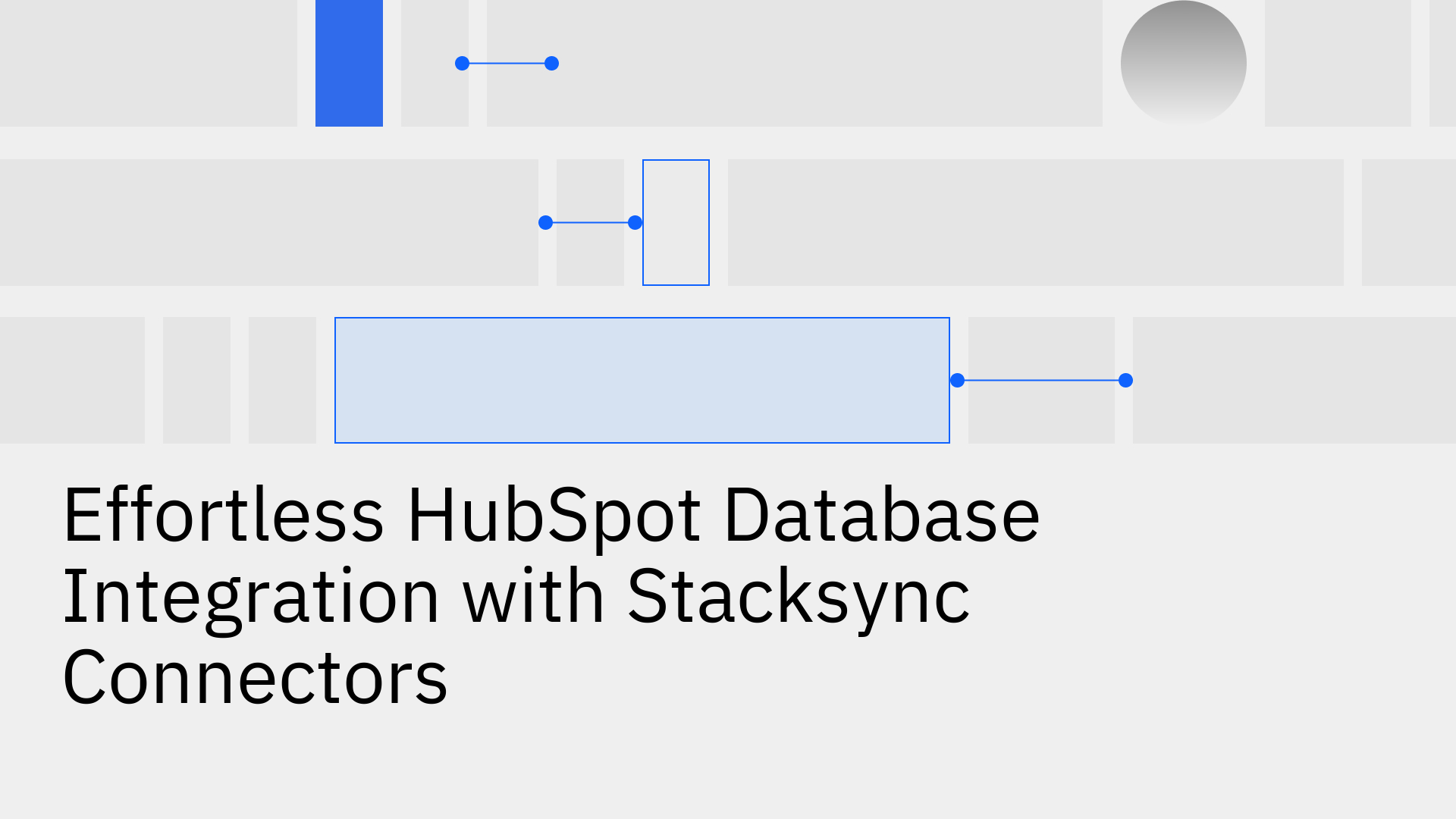Maintaining data consistency between your HubSpot CRM and backend databases is a critical but often underestimated technical challenge. While HubSpot serves as the central hub for customer interactions, essential operational, product, and financial data frequently resides in separate SQL or NoSQL databases. The technical problem is clear: without a robust, real-time synchronization mechanism, data becomes siloed, latent, and inconsistent. This fragmentation leads to inefficient workflows, unreliable reporting, and a compromised view of the customer lifecycle. Engineering teams are often tasked with bridging this gap, diverting valuable resources to build and maintain brittle, custom API integrations that are prone to failure and difficult to scale.
The Technical Limitations of Traditional Integration Methods
Enterprises typically approach HubSpot database integration through several methods, each with significant technical drawbacks:
- Custom API Integrations: Building a custom solution requires extensive engineering effort. Developers must navigate the complexities of HubSpot's APIs, handle authentication, manage rate limits, implement pagination, and build resilient error-handling and retry logic [1]. This approach is not only time-consuming and expensive to develop but also creates a significant maintenance burden, as APIs evolve and business requirements change [2].
- Generic iPaaS Platforms: While powerful, general-purpose Integration Platform as a Service (iPaaS) solutions can be overly complex and costly for what should be a straightforward synchronization task. They often rely on scheduled, batch-based processing, which introduces latency and fails to provide the real-time data flow required for modern operational systems.
- Native and Point Solutions: HubSpot's native Data Sync is a functional tool for basic integrations but has inherent limitations. Incremental syncs can have a latency of up to five minutes, and large initial data loads can take a significant amount of time to complete [3]. These solutions often lack the advanced capabilities needed for complex schemas, custom field mapping, and robust conflict resolution, forcing workarounds or a return to custom code.
Stacksync: Purpose-Built for Real-Time, Bi-Directional Synchronization
Stacksync provides a solution to these challenges with a platform engineered specifically for real-time, bi-directional data synchronization. It eliminates the complexity of custom code and the limitations of generic tools, offering a reliable, scalable, and efficient integration layer for your most critical operational systems.
As an official HubSpot marketplace app, the Stacksync connector for HubSpot is designed for seamless, two-way data synchronization with a wide array of backend systems, including PostgreSQL, MongoDB, Snowflake, SQL Server, and Firebase [4].
Key technical capabilities include:
- True Bi-Directional Sync: Stacksync provides a bi-directional sync engine, not merely two one-way pipelines. Changes made in HubSpot are reflected in your database quickly, and updates to the database are propagated back to HubSpot. This helps ensure data consistency across systems.
- No-Code, High-Performance Setup: Connect HubSpot to your database in minutes through a guided, no-code interface. The platform abstracts away all the underlying API complexity, allowing you to configure and launch a production-grade integration without writing a single line of code.
- Advanced Customization and Control: Go beyond basic sync with support for custom objects, advanced field mapping, and granular filtering. Stacksync's trigger features can enhance HubSpot webhooks, enabling workflow automation based on record creation, updates, or deletions [5].
- Automated Reliability: The platform includes automated conflict resolution and sophisticated error handling to prevent data corruption and help ensure syncs remain active. This supports data consistency without manual intervention.
A Unified Strategy for All Your Operational Systems
The power of Stacksync's architecture extends beyond a single connection. The same principles of real-time, bi-directional sync can be applied to create a unified data fabric across your entire technology stack.
- Stacksync Salesforce Integration: For organizations using Salesforce, Stacksync delivers real-time, reliable synchronization with databases and other SaaS applications, helping keep sales and operational data aligned.
- Complex ERP Sync with the Stacksync NetSuite Connector: ERP integrations are often complex. The Stacksync NetSuite connector simplifies this process, enabling data flow between NetSuite and your CRM, e-commerce platforms, and custom applications.
- Reliable E-commerce Operations: A common challenge is achieving a reliable Netsuite Shopify integration. Businesses must keep inventory, customer data, and order information synchronized between their storefront and their ERP. Stacksync provides a solution to connect Netsuite with Shopify, offering Shopify Netsuite sync options that support data consistency for finance, fulfillment, and customer service teams.
Tangible Technical and Operational Benefits
Implementing Stacksync delivers immediate and measurable advantages for your engineering and operations teams.
Benefits of Real-Time Sync
Benefits of Real-Time Sync: Technical Impact
| Benefit |
Technical Impact |
| Guaranteed Data Consistency |
Reduces data silos by creating a single, reliable source of truth. Enables a comprehensive view of business operations [6]. |
| Empowered Engineering Teams |
Frees developers from building and maintaining custom integration scripts. Resources can be reallocated to core product development and innovation. |
| Enhanced Operational Agility |
Automates cross-system workflows with real-time triggers. Low data latency enables immediate action on business events. |
| Effortless Scalability |
The architecture is designed to handle data volumes from thousands to millions of records without performance degradation or manual reconfiguration. |
| Enterprise-Ready Security |
Compliance with SOC2, GDPR, and other enterprise standards helps ensure data is synchronized securely and in accordance with regulatory requirements. |
By abstracting away the complexity of data integration, Stacksync enables organizations to build a more connected, efficient, and scalable technology stack. Instead of struggling with latent, inconsistent data, your teams can operate with confidence, knowing that every system reflects the real-time state of the business.
To learn more about how Stacksync can solve your integration challenges, visit stacksync.com.
Citations
